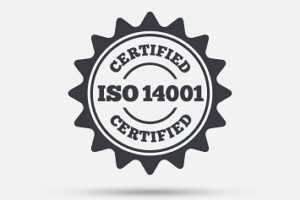The International Organization for Standardization (ISO) 14001 Environmental Management Standard underwent a major revision in 2015, and employers that wish to remain certified in ISO 14001 have until September 2018 to bring their environmental management systems (EMSs) into compliance with the revised standard and complete a recertification or surveillance audit—something many employers are planning to do this year.

Blankstock / iStock / Getty Images Plus / Getty Images
If you’re already ISO 14001-certified, you’ll only need to worry about what’s new in the standards. Here are some of the changes you’ll need to address in order to successfully maintain your ISO 14001 certification under ISO 14001:2015.
New and Expanded Requirements
The new version of ISO 14001 accounts for many changes that have occurred since the original was put in place, including innovations in management systems and changes in business management practices, increasing emphasis on sustainability accounting, concerns about climate change, and the environmental effect of products over their life cycle. Here are some of the new and expanded requirements that organizations must address before they can recertify.
Standardized structure. The structure of the standards themselves is changing, and the structure, requirements, terms, and definitions will be standardized across all ISO management standards. All ISO management standards will be renumbered and reorganized into the new structure, which places the “discipline-specific” requirements—in the case of ISO 14001, that means the EMS requirements—in sections 4–10 of the standard. The changes are intended to simplify and streamline the integration of different management systems. Organizations are not required to adopt this new structure into their management system.
Internal and external context. Under the 2004 standard, businesses were required to determine the scope of their EMS. New to the 2015 revision, businesses must focus on organizational context and interested parties. For example, what internal or external factors can affect the EMS? What environmental conditions could affect the EMS or could be affected by it? This gives businesses the opportunity to identify environmental concerns like climate, air and water quality, and land use that must be accounted for; to enumerate regulatory, technological, and economic factors that will impact the EMS; and to consider how internal governance, business strategies, and resources will affect the EMS. In addition, the organization will identify interested parties, both internal and external, whose needs and expectations will be treated as compliance obligations in the EMS.
Scope of the EMS. In determining the scope of the EMS, businesses must now identify and include all activities, products, and services that have significant environmental aspects.
Leadership. The revised standard explicitly requires “top management” to demonstrate leadership in and commitment to the EMS, making them accountable for the successful achievement of the intended goals of the EMS. Top management is also tasked with assigning responsibilities and roles within the organization.
Planning for risks and opportunities. The new standard requires businesses to identify and document risks and opportunities that could affect its ability to fulfill its compliance obligations, enhance its environmental performance, or achieve its environmental objectives and any other objectives that it has identified as “high priority.” No formal risk assessment methodology is required, but organizations should address any identified risks and opportunities that are of strategic importance and that support the intended outcomes of the EMS.
Life-cycle perspective. At one time, businesses were only concerned with the environmental impacts of their inputs and processes. The 2015 standard requires businesses to look at their products, services, and activities from a “life-cycle perspective.” This perspective considers the potential environmental impact of a product at all points in its life cycle, from raw material acquisition and manufacture through use and final disposal, with an eye to controlling or influencing those.
Communication. New in the “Support” category (which includes training and competence requirements) is a communication requirement that requires businesses to establish a comprehensive internal and external communication process for the EMS. The process should state what will be communicated, and when, how, and with whom it will be communicated. The information should be consistent and reliable.
Documentation. The requirements for creating, updating, controlling, and maintaining documents and records have not changed significantly from the 2004 edition; however, some of the terminology referring to documentation, documents, and records is new, and the updated standard allows for new information management systems.
Performance evaluation. The 2004 standard required businesses to determine what methods would be used for monitoring and measurement; the new standard also requires the methods of analysis and evaluation to be determined.
Improvement. The updated standard requires organizations to embrace a philosophy of continual improvement of environmental performance under the EMS.
